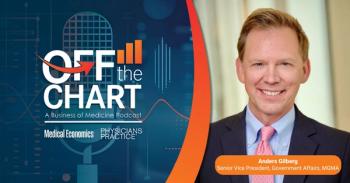
Enterprise Risk Management and Your Medical Practice
Experts on enterprise risk management and your medical practice, the changing dynamic of risk, and the effect on human capital.
Today's healthcare environment is demanding a great deal of energy and stamina from its workforce. The level of fatigue and the impact on human capital is something that should not be overlooked. According to Roberta Carroll, ARM, MBA, CPCU, CPHRM, LHRM, senior vice president for Aon Healthcare, "[w]hen people talk about resources, they talk about money all the time, then they think 'that also includes people' but they tend to forget the softer [resources]." These "softer resources" are being focused on in a new light. After all, it is the human capital that drives productivity and is responsible for the success of a medical practice, health system or healthcare company.
Carroll and Peggy Nakamura, RN, MBA, JD, vice president, chief risk officer, and associate counsel for Adventist Health were recently willing to lend their years of experience and expertise in the area of enterprise risk management (ERM) in light of the dynamic changes in healthcare, as well as the evolution of technology in general.
In the general business landscape, the passage of the Sarbanes-Oxley Act of 2002 led many entities to implement ERM programs. These principles trickled into the healthcare industry, where the American Health Lawyers Association has accepted the definition of ERM as, "a discipline that engages professionals in the practice of identifying, managing, controlling, and monitoring all risks to the organization." This enables healthcare organizations to engage individuals and physicians at all levels in order to proactively identify risks and implement policies and monitoring.
Rachel Rose: What are some of the benefits of ERM versus traditional risk management programs?
Roberta Carroll: ERM focuses on those correlations, connections, and the synergistic effect among all of the different domains/units [of an entity]. Human capital is one of the easiest items to identify and respond to through this process because it includes things like morale, fatigue, and the energy level. To the extent that workforce is not functioning optimally, that translates into a multitude of other risks, including: finance, technology, and patient safety.
Peggy Nakamura: In the human capital area, especially in relation to fatigue, etc., one thing that ERM can really do is to overcome that negative association with risk management that has traditionally been in place. That is because when the ERM program is … highlighting successes, instead of being viewed as negative, like responses to traditional risk management. By highlighting the human capital projects and giving "kudos" to those involved in the projects and the multi-disciplinary aspects, many organizations have benefited.
RR: How has ERM changed the perception of risk?
RC: Traditionally, risk has been viewed as uncertainty and the connotation was typically negative - a pure hazard risk. Now, risk is being viewed more opportunistically. An insurable risk is more of an uncertainty and much more speculative and, therefore, [has] much more potential to have some opportunity to have some value or to gain. This approach is more akin to playing cards: win, lose, or draw. This translates into the negative aspects of risk being tempered a bit. This has taken the healthcare industry several decades to view risk in this light. By making outcomes better in a procedure such as cardiac surgery, you can reduce the risk of an adverse financial impact to the organization, thereby creating a significant advantage.
PN: One example that is often used in management training is obstetrics(OB). Utilizing an ERM assessment tool can enable an organization to look beyond the negative risks associated with developing a new OB department and focus on employing properly trained people, utilizing the best equipment as ways to overcome the negative risks. Although one cannot alleviate all risk in healthcare procedures because of their inherent nature, there are ways to view the risk in a more positive light. This is a typical result of what you can achieve in an ERM program using risk management principles.
RR: How does ERM fit into the larger objectives of an organization?
RC: The strategic plan is a great place to glean the goals of an organization. In terms of the OB example above, the new department might fit a community need, which is often identified in the strategic plan. Hence, meeting a need on a different level and managing the uncertainty with a slant towards value.
PN: The OB department scenario is a particularly vivid because it encompasses all of the risk domains that are covered in an ERM assessment. The same can be said for any system or project - regardless of the size, because of the application of the ERM principles and looking for favorable or unfavorable outcomes.
In capturing the spirit of ERM, in light of these examples, physicians and other healthcare companies should view the process in a holistic light. Organizationally, it looks at every operational unit and division, not just a single area.
Next week's blog will explore ERM and ICD-10.
Author disclosure: Roberta Carroll, Peggy Nakamura, and Rachel V. Rose are co-authors of the American
Health Lawyers' Enterprise Risk Management Handbook for Healthcare Entities (2nd edition).
Newsletter
Optimize your practice with the Physicians Practice newsletter, offering management pearls, leadership tips, and business strategies tailored for practice administrators and physicians of any specialty.









